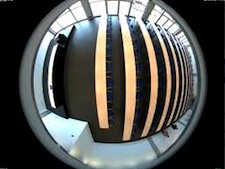It’s the time of year for saving money!
 I’m looking/listening to a Paul Simon perform “Hearts and Bones” on my iPod Touch via a free app called iTunes festival London 2011. During the song the cameras pan around the concert hall and it’s a vast cavernous space filled to the brim with people. My first thought upon seeing that was, “ugh, looks like purgatory to me – you are somewhere, near to perfection, and YOU can’t see or hear it…”
I’m looking/listening to a Paul Simon perform “Hearts and Bones” on my iPod Touch via a free app called iTunes festival London 2011. During the song the cameras pan around the concert hall and it’s a vast cavernous space filled to the brim with people. My first thought upon seeing that was, “ugh, looks like purgatory to me – you are somewhere, near to perfection, and YOU can’t see or hear it…”
As you might surmise by my reaction to the size of Simon’s concert venue, I don’t like concerts in big stadiums or outdoor festivals. I’d rather listen to a good recording. Or, even better, an all-acoustic house concert. But that’s just me.
Back to the initial question. Thinking about rooms in houses where you plunk down audio gear. Every room will, because it has dimensions, have frequency anomalies based on those dimensions. That’s acoustics 101. And for most of us, like genetics, we often don’t have a whole lot of say as to what these dimensions are.
So what can we do? The first thing is to place speakers and you primary listening position so they are NOT on the center line or equal distance from the side walls. That doesn’t mean that one speaker should be five feet away while the other is seven feet away. No. What it does mean is that your set-up should still be symmetrical in terms of distance from primary listening position to your right and left speakers, but the whole system should be at least 6 inches off center within the room. This gets the speakers and your head out of the areas where the most severe room related issues will be most noticeable. Setting up the whole system slightly off-center in relation to your room won’t solve any room-related issues, but it will reduce them. And in a multi-purpose room, that may well be the most you can do without creating a domestic issue.
Are there certain perfect room dimensions for a stereo system? Not really. Forget about “the golden mean” for determining room dimensions. Whealy.com has an excel spreadsheet that reminds me of the one that Russ Hirschelmann developed for the now-defunct Stereophile’s Guide to Home Theater, which is no longer on that site, but you can get it here – download “New Room Calc” and open it in Excel.
I used this to adjust the dimensions in my large room, and as you can see by the resonant node distribution, the results were quite good, with only a few problem frequencies. Try it and let me know what you think…





